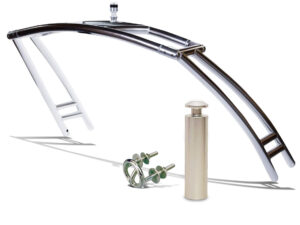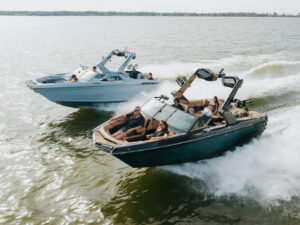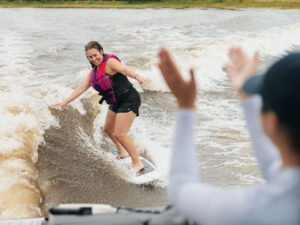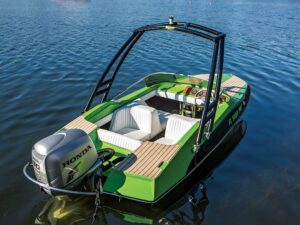When Trent called and told me the premise of this article, my head started to swirl. Despite the fact that I teach people for a living, I have never taught my own girls how to ski. I have actually made a point not to. I’ve always wanted it to be something they wanted to do instead of something they felt like they had to do for me. So, you can imagine how incredibly happy I was when I told my little girl about the article, and she said she wanted to be the one I taught.
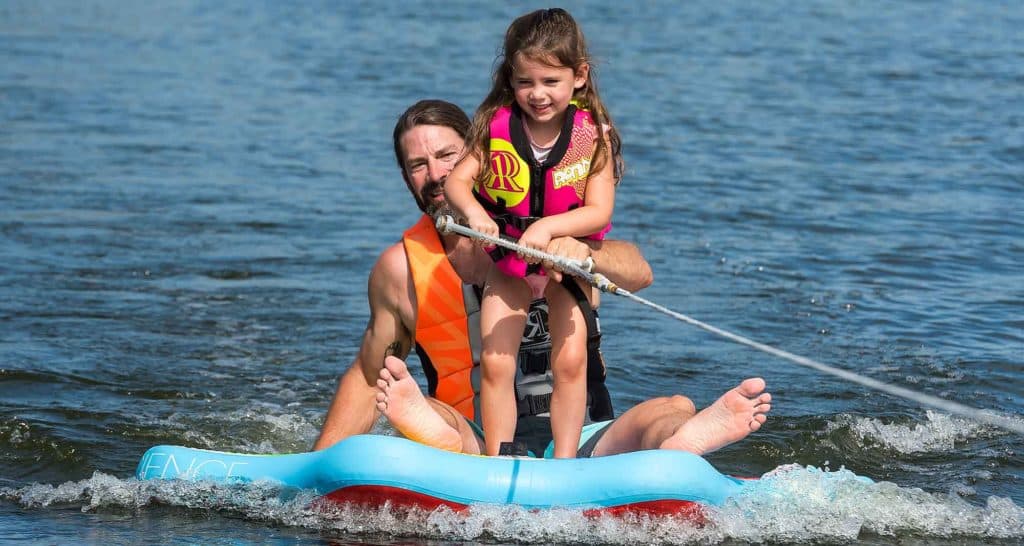
First-Timers One of the biggest obstacles in teaching little kids to ski is getting them comfortable with the idea of being behind the boat, away from their parents. I can remember as a child floating in the middle of a big lake, wondering what could be lurking under me as the boat drove away in a large circle to come back. Depending on the age and willingness of your child, you can take a few steps to raise their comfort level before putting them on a pair of skis. I believe any time behind the boat (even on a tube) helps. But I prefer to do something in which they are holding on to a handle so they can feel that sensation.
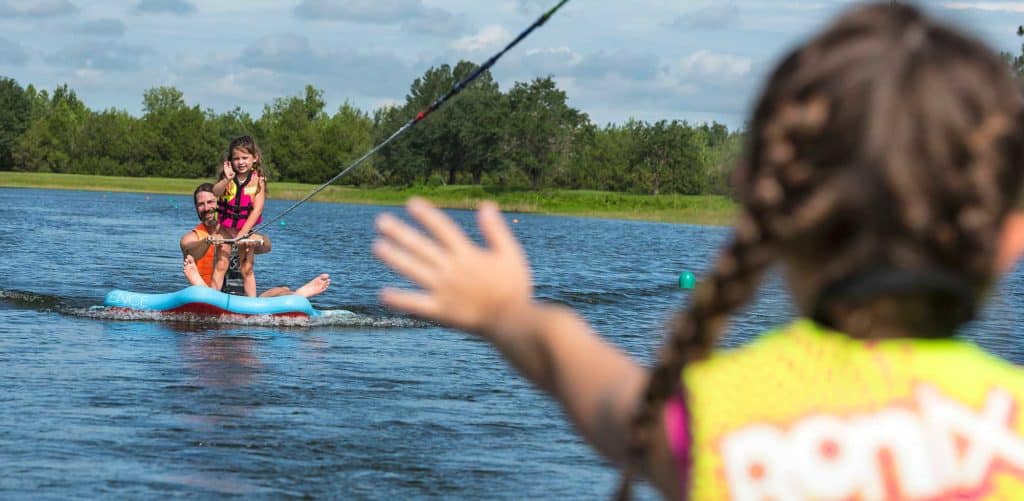
How Tubing Can Help Skiing As you can see, I am on an inflatable disc with Lennon so she can stand and hold the handle. The beauty of this is you can go incredibly slow (we are in idle here). If you don’t have something like this, you can use a kneeboard, wakesurfer or sled. I always start with the rope really short so that you can maintain eye contact with them and talk to them from the back of the boat. As they get more comfortable, start letting the rope out so they are farther and farther away from you. Just make a game of it, and before you know it, they will be all the way out on the rope, cruising around with a big smile.
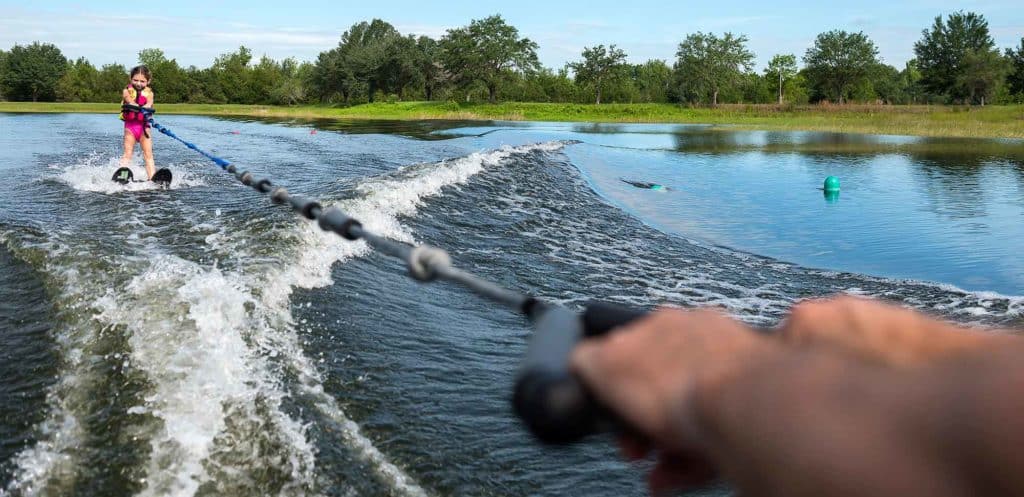
Moving on to Skis Once they are comfortable being pulled by the boat, or of an age you don’t think you need to worry about it, it’s time to strap them in some skis. I always start on dry land so they can experience some of the feelings before hopping in the water. Depending on the size of the child, you can pull them around in the grass if you like, but at bare minimum, have them put the skis on and sit down on them, and give them a handle. The two most important things are keeping your arms completely straight and knees completely bent. You can pull them up while standing on shore and show them what happens if they pull on their arms or if they push on their legs. Both will result in either sliding under the handle and falling back or toppling over the front. When done properly, it will take very little effort by the person holding the handle and by the skier.
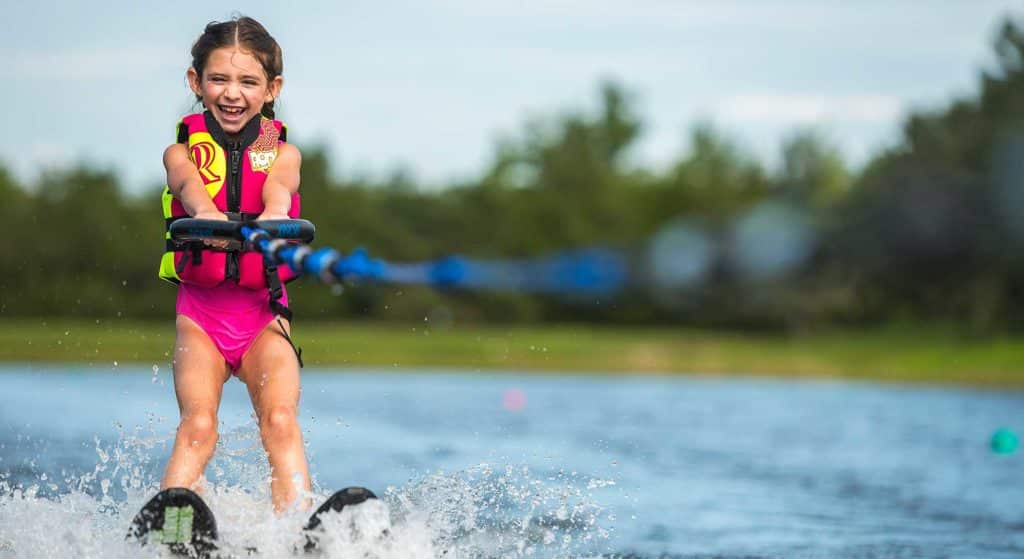
Learning Control I will go over the same drill with them in the water, with the tip of the skis touching the platform. That way, you can stand on the platform, pull the handle, and they will simply rock up out of the water. With my older daughter, Ella, I’m using a rope with a handle on each end. The great thing about this is that you maintain more control over them, and they are looking and talking to you. If they fall, you can let go of your handle instead of them dragging through the water. You can see, she is always keeping her arms straight and knees slightly bent. Once they have gotten up and cruised around successfully several times, you can go ahead and put the rope on the pylon. One important thing when teaching anyone is keeping the speed slow. Ella is around 50 pounds, and we are going 10 mph. You may have to go a little slower or faster depending on the size of your child and when the wake forms up on your boat. But slower is always better to start.
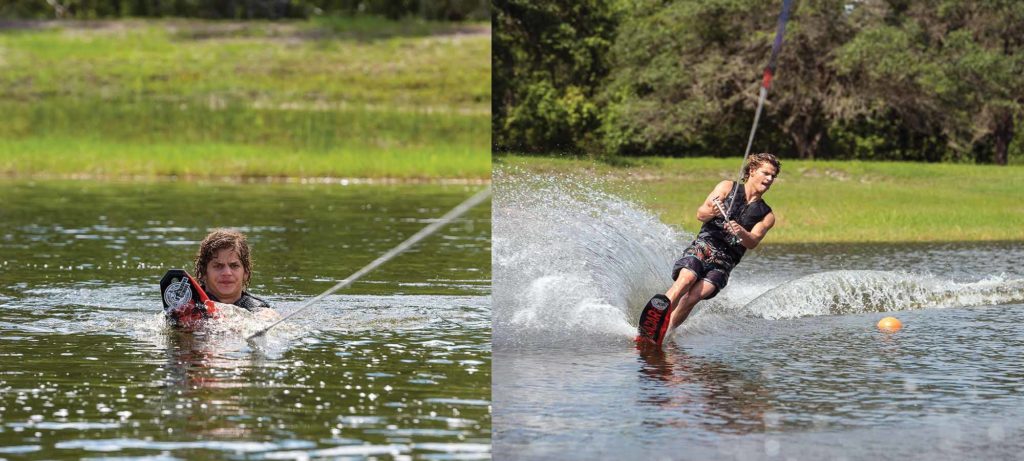
Starting Slalom Skiing Now that you can navigate two skis, it’s time to slalom. You can learn to drop a ski, but ultimately we want to do a deepwater start. The start isn’t that different than getting up on a pair of skis, there is just more balance involved. So, just like with two skis, we are going to keep our knees completely bent and arms completely straight. The balance really comes from engaging your core, which will help keep you in a ball and allow you to rock up on the water; otherwise, your upper and lower body become independent of each other, making it easier to get pulled out. You also want to keep your ski pointed to the side. If you are right-foot forward, point it to the right, and vice versa. When the boat starts to pull you, it will always pull the ski in to the rope, so the more you angle the ski will help. I generally like to teach people with the back foot in the binding, but if you need to, you can drag your back foot behind you to start. Don’t be in a rush to jam it in the binding once you’re up. Take time to get balanced out and place it on the back of the ski. Now you are just going to keep your knees slightly bent and arms straight.
Once you are up, you can slowly navigate from side to side. You don’t want to start doing fast wake crossings or big turns at first, but rather pull out on the side of the boat and maintain a lean, focusing on the same body position you have standing behind the boat. You should learn to do this on both sides of the boat before ever really working on crossing the wakes.

